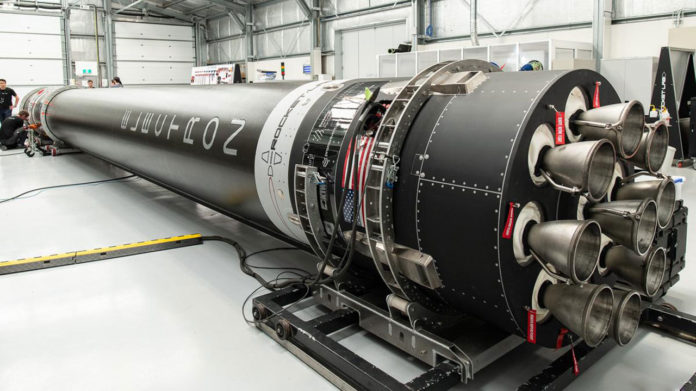Rocket Lab is preparing for its next launch, scheduled in May 2021 from Launch Complex 1 in New Zealand. The ‘Running Out of Toes’ mission will be Rocket Lab’s 20th Electron launch overall and the second of three planned ocean splashdown recovery missions.
In its next mission, the company plans to bring a rocket back from space, slowing the Electron launch vehicle down from speeds of >Mach 8 as it re-enters Earth’s atmosphere before splashing the rocket down in the ocean. This complex mission is the next major step toward making Electron the first orbital-class reusable small launch vehicle, enabling rapid-turnaround launches for small satellites.
The Running Out of Toes mission will see Electron deploy two Earth-observation satellites for BlackSky’s global monitoring constellation. While Electron’s second stage delivers the satellites to orbit, Electron’s first stage will undertake a series of complex maneuvers designed to enable the stage to survive the extreme heat and forces of atmospheric re-entry on the way back to Earth. To withstand the immense temperatures up to 2,400 °C, the Electron features an evolved heat shield designed to protect the engines and direct the force of the plasma away from the rocket.
As the craft enters the atmosphere, it will deploy a drogue parachute to help begin the process of slowing the rocket down and stabilizing its descent. The process will then be followed by a circular one once it’s closer to the surface of the ocean. If all goes according to plan, a Rocket Lab vessel will then rendezvous with the stage in the splashdown zone, approximately 650 km (403 miles) off the coast from Rocket Lab’s Complex 1 on the Mahia Peninsula in New Zealand.
“Reusability is hard for any launch vehicle, but it’s a particularly complex challenge for small rockets. The Return to Sender mission proved we could successfully bring Electron back from space. Now it’s about validating re-entry data a second time and starting to introduce the advanced systems that will enable us to launch, catch and repeat,” said Rocket Lab founder and CEO Peter Beck.
With the successful completion of the test, Rocket Lab intends to move into the recovery program’s final phase – mid-air recovery, where Electron stages will be captured mid-air by a helicopter.
While Electron is designed for mid-air capture, Rocket Lab’s newest launch vehicle, the 8,000 kg class Neutron rocket under development, is designed for propulsive landing.
